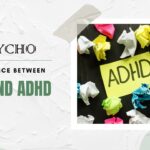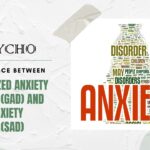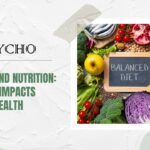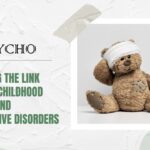Schizoaffective Disorder and Dysthymia have comparable mood abnormalities but different causes, symptoms, and treatments. Schizophrenia and mood problems combine to form Schizoaffective Disorder. The schizoaffective disorder causes hallucinations, delusions, disorganization, and mania or sadness. Schizoaffective disorder includes psychotic symptoms, unlike dysthymia, which is just poor mood. These people have trouble differentiating reality from their thoughts.
Dysthymia, officially called persistent depressive disorder (PDD), is defined by a chronic and persistent low mood lasting at least two years in adults and one year in children and adolescents. Dysthymia’s long-term emotional symptoms are less severe than serious depression, but they can hinder everyday functioning. Dysthymia is not psychotic like schizoaffective disorder. Dysthymia sufferers typically feel hopeless, exhausted, and unsatisfied.
Both illnesses’ treatments differ. Schizoaffective Disorder needs antipsychotics, mood stabilizers, and psychotherapy to control mood and psychotic symptoms. CBT and antidepressants are used to treat dysthymia. Dysthymia therapy aims to improve mood and quality of life.
Schizoaffective Disorder and Dysthymia both cause mood problems, although their symptoms and treatments differ. Schizoaffective Disorder involves mood and psychotic symptoms and requires a thorough treatment plan. Psychotherapy and medicine are used to treat dysthymia or persistent depressive condition. Each of these mental illnesses has specific issues that require accurate diagnosis and treatment planning.
|
S. No. |
Aspect |
Schizoaffective Disorder |
Dysthymia (Persistent Depressive Disorder) |
|
1 |
Diagnosis Criteria |
Combination of schizophrenia and mood disorder symptoms |
Chronic low-grade depression for at least 2 years |
|
2 |
Key Symptoms |
Schizophrenia Symptoms: Delusions, hallucinations, disorganized speech, etc. Mood Symptoms: Depressive or manic episodes |
Persistent low mood, loss of interest, low energy |
|
3 |
Mood Episodes |
May experience depressive and manic/mixed episodes |
Consistently low mood without distinct episodes |
|
4 |
Duration of Mood Episodes |
Mood episodes are significant and distinct from psychotic symptoms |
Persistent for most days over a period of 2+ years |
|
5 |
Psychotic Symptoms |
Present during mood episodes |
Absent; not a defining feature |
|
6 |
Schizophrenia Diagnosis |
Mood symptoms are present for a substantial portion of the illness |
Schizophrenia symptoms are not a defining feature |
|
7 |
Impact on Functioning |
Can cause significant impairment in daily functioning |
Can cause impairment but typically milder |
|
8 |
Treatment |
Combination of antipsychotic and mood-stabilizing medications, psychotherapy |
Antidepressants, psychotherapy, lifestyle changes |
|
9 |
Prognosis |
Varied; some individuals can have a good prognosis, while others struggle with symptoms |
Generally better prognosis; many people respond to treatment |
|
10 |
Mood Stability |
Mood stability is influenced by both psychotic and mood symptoms |
Mood stability is primarily influenced by depressive symptoms |
|
11 |
Relapse |
Risk of relapse during both mood and psychotic episodes |
Less likely to have severe relapses |
|
12 |
Impact on Relationships |
Can strain relationships due to mood and psychotic symptoms |
Can strain relationships due to chronic low mood |
|
13 |
Comorbidity |
Substance abuse, anxiety disorders, and other psychiatric conditions are common |
Anxiety disorders, substance abuse, and other mood disorders may be comorbid |
|
14 |
Onset Age |
Late adolescence to early adulthood |
Any age, but often begins in late teens to early adulthood |
|
15 |
Genetic Factors |
Strong genetic predisposition |
Genetic and environmental factors contribute |
|
16 |
Brain Structure |
Abnormalities in brain structure and neurotransmitter systems |
Neurochemical imbalances may contribute |
|
17 |
Social Withdrawal |
Often present due to both mood and psychotic symptoms |
Less pronounced social withdrawal |
|
18 |
Perceptual Disturbances |
Hallucinations and delusions are common |
Typically not associated with perceptual disturbances |
|
19 |
Cognitive Impairment |
Variable; can range from mild to severe cognitive impairment |
Less severe cognitive impairment, if present |
|
20 |
Suicidal Thoughts |
Common, especially during depressive episodes |
Possible, due to persistent low mood |
|
21 |
ECT (Electroconvulsive Therapy) |
May be considered in severe cases |
Can be considered for treatment-resistant cases |
|
22 |
Psychotherapy |
Important as part of treatment plan |
Beneficial, particularly cognitive-behavioral therapy |
|
23 |
Impairment of Reality Testing |
Impaired during psychotic episodes |
|
|
24 |
Sleep Disturbances |
Common due to mood and psychotic symptoms |
Common due to depressive symptoms |
|
25 |
Medication Management |
Often requires complex medication regimens |
Generally simpler medication management |
|
26 |
Emotional Range |
Wide range due to mood and psychotic symptoms |
More stable but consistently low mood |
|
27 |
Awareness of Symptoms |
Varies; some individuals are aware of their symptoms, while others lack insight |
Generally more awareness of depressive symptoms |
|
28 |
Severity |
Can be severe and significantly impair functioning |
Generally less severe, but can still impact daily life |
Frequently Asked Questions (FAQ)
Q.1 What are Dysthymia and Schizoaffective Disorder?
A mental health illness known as Schizoaffective Disorder is defined by a confluence of psychotic symptoms, such as hallucinations or delusions, and mood disorder symptoms, such as sadness or mania. Contrarily, a chronic depressive disease called dysthymia is characterized by persistent, mild to severe depressed symptoms.
Q.2 How Do the Symptoms Vary?
In contrast to Dysthymia, which is characterized largely by persistently poor mood, Schizoaffective Disorder involves a combination of mood and psychotic symptoms. Hallucinations, delusions, and disordered thinking are common in Schizoaffective Disorder patients but are not characteristic of dysthymia.
Q.3 How long do symptoms last?
Symptoms of schizoaffective disorder must last for at least six months and must include at least two weeks of psychotic symptoms without meeting the criteria for a mood disorder. Adults with dysthymia experience symptoms for at least two years, with few intervals of normal mood.
Q.4 Exist Any Common Symptoms?
Depressive symptoms including poor energy, low self-esteem, and difficulty focusing can occur with any illness. But unlike Dysthymia, Schizoaffective Disorder also includes a layer of psychotic symptoms.
Q.5 In what ways do treatments differ?
Antipsychotic drugs, mood stabilizers, and psychotherapy are frequently used in the treatment of schizoaffective disorder. The most typical treatments for dysthymia are antidepressants, talk therapy, and lifestyle modifications. Therapy plans that are specifically designed for each patient are necessary.









